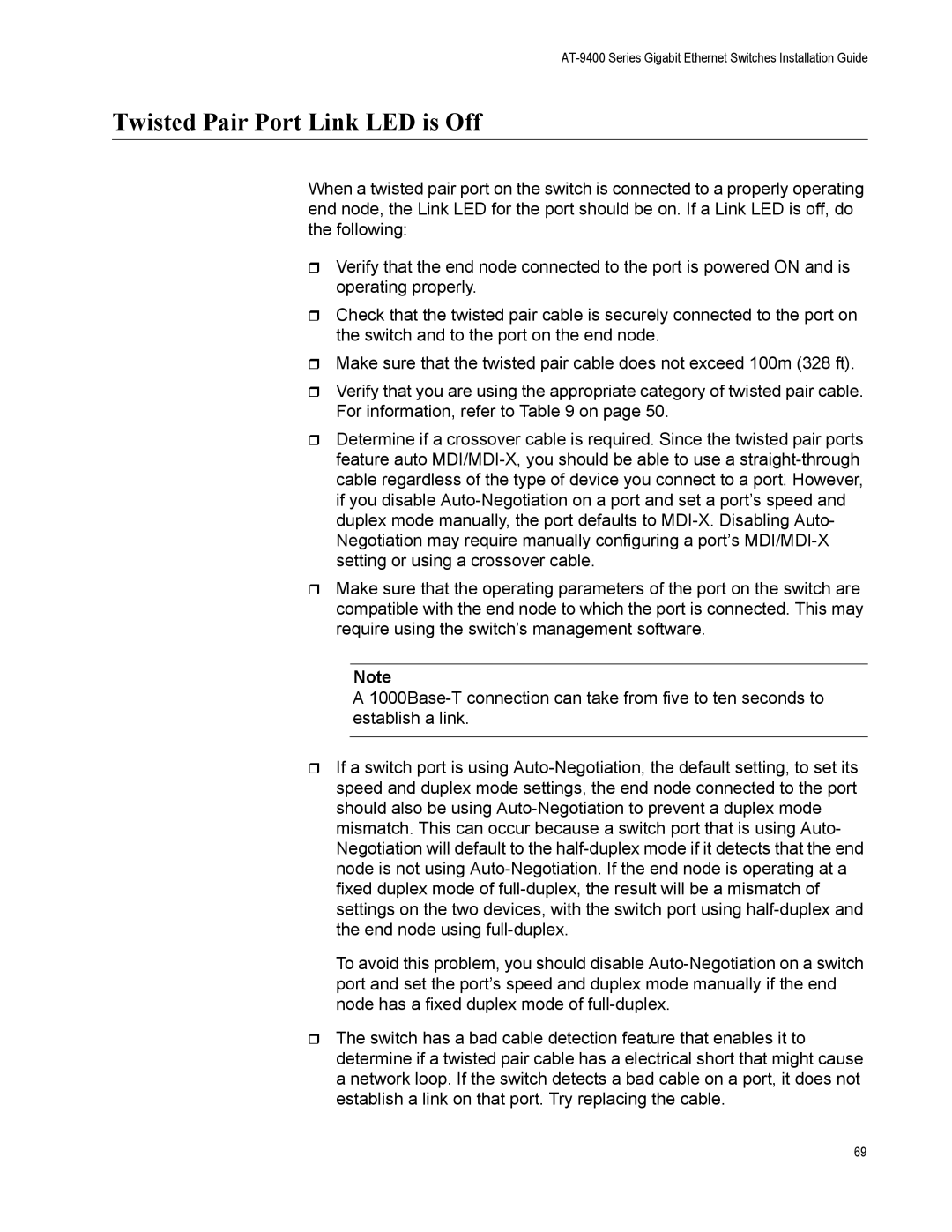
AT-9400 Series Gigabit Ethernet Switches Installation Guide
Twisted Pair Port Link LED is Off
When a twisted pair port on the switch is connected to a properly operating end node, the Link LED for the port should be on. If a Link LED is off, do the following:
Verify that the end node connected to the port is powered ON and is operating properly.
Check that the twisted pair cable is securely connected to the port on the switch and to the port on the end node.
Make sure that the twisted pair cable does not exceed 100m (328 ft).
Verify that you are using the appropriate category of twisted pair cable. For information, refer to Table 9 on page 50.
Determine if a crossover cable is required. Since the twisted pair ports feature auto
Make sure that the operating parameters of the port on the switch are compatible with the end node to which the port is connected. This may require using the switch’s management software.
Note
A
If a switch port is using
To avoid this problem, you should disable
The switch has a bad cable detection feature that enables it to determine if a twisted pair cable has a electrical short that might cause a network loop. If the switch detects a bad cable on a port, it does not establish a link on that port. Try replacing the cable.
69
